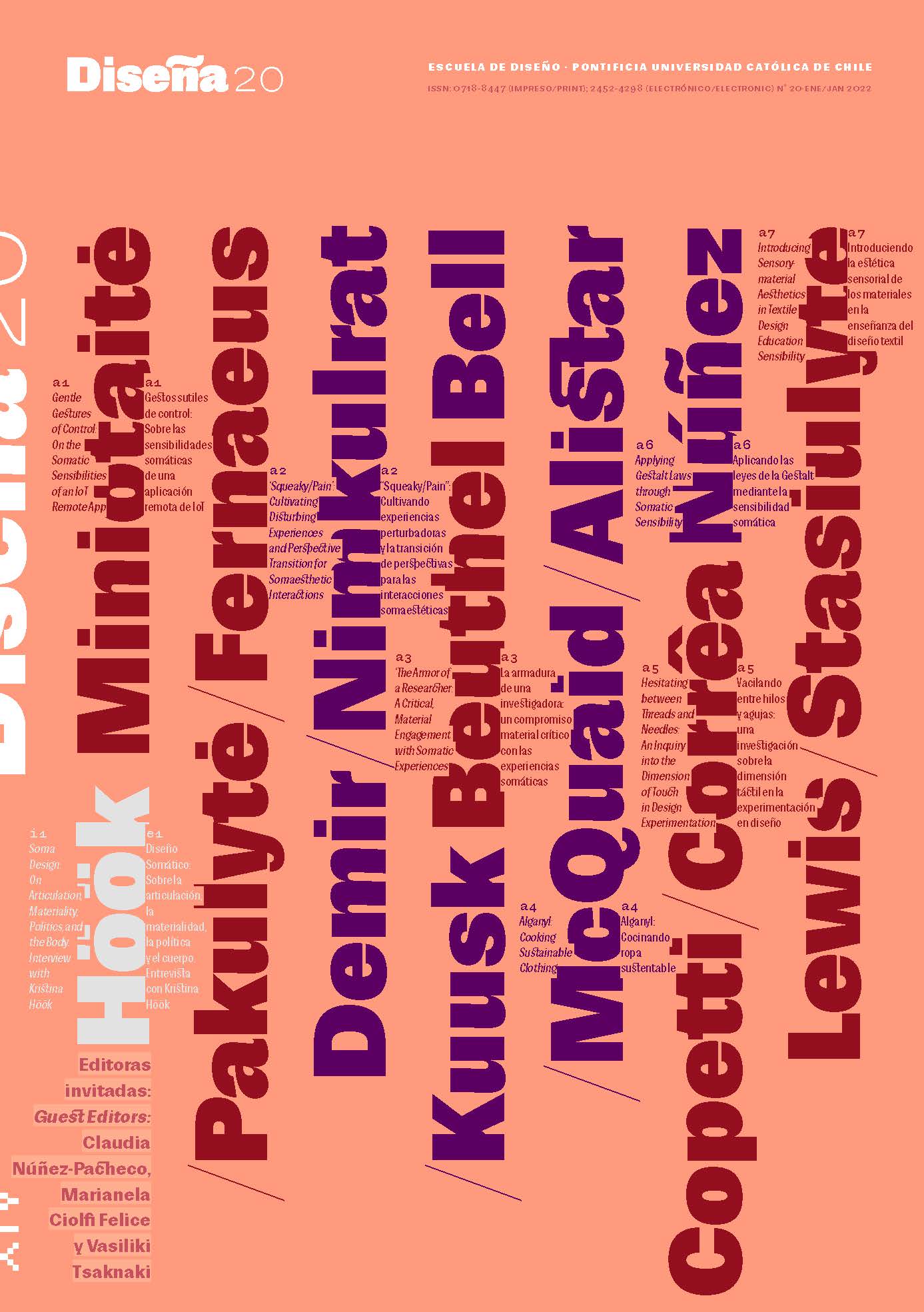Soma Design: On Articulation, Materiality, Politics, and the Body. Interview with Kristina Höök
Main Article Content
Abstract
Kristina Höök is Professor of Interaction Design at the Royal Institute of Technology (KTH), where she leads the Somaesthetic Design Research Group, a lab that explores ways to reincorporate the body and movement into a design regime that has long privileged language and logic. Höök’s research on affective interaction, somaesthetic design, and the Internet of Things seeks to make life with technology more meaningful, enjoyable, creative, and aesthetically appealing by focusing on the soma, that is, on our living, purposive, sentient, perceptive body.
Author of Designing with the Body: Somaesthetic Interaction Design (MIT Press, 2018), Kristina Höök starts by briefly defining soma design in connection with somaesthetics and feminist theories. In light of the fundamental definition of somaesthetics and the role of cultivation and appreciation, Höök makes some distinctions between soma design and other design approaches, discussing, for example, the tensions between the use of language and body, cultivation versus correction, slowness versus solutionism, culture versus nature, and tangible versus digital materiality. She clarifies how the significance of articulating experience in detail for soma design does not betray the centrality of the body, where sketching, making, and coding could represent means of articulation in themselves.
Downloads
Article Details

This work is licensed under a Creative Commons Attribution-ShareAlike 4.0 International License.

This work is licensed under a Creative Commons Attribution-ShareAlike 4.0 International license.
COPYRIGHT NOTICE
All contents of this electronic edition are distributed under the Creative Commons license of "Attribution-ShareAlike 4.0 Internacional" (CC-BY-SA). Any total or partial reproduction of the material must mention its origin.
The rights of the published images belong to their authors, who grant to Diseña the license for its use. The management of the permits and the authorization of the publication of the images (or of any material) that contains copyright and its consequent rights of reproduction in this publication is the sole responsibility of the authors of the articles.

